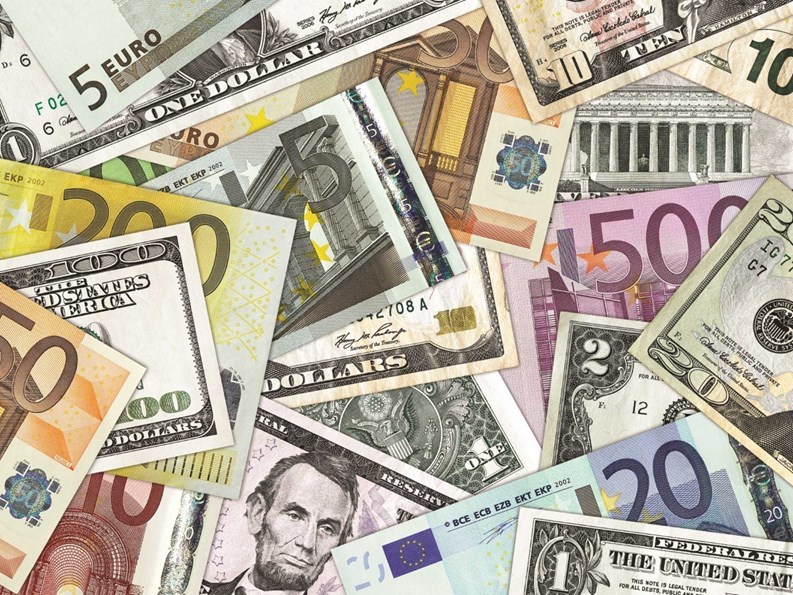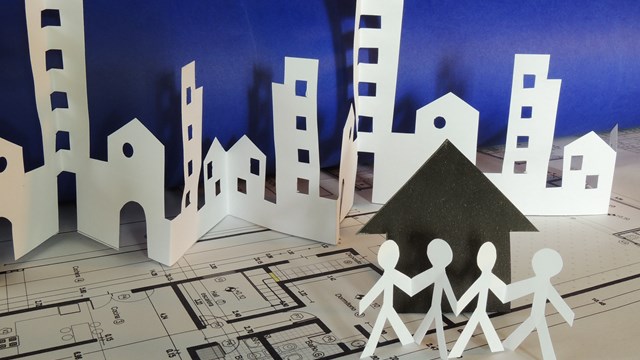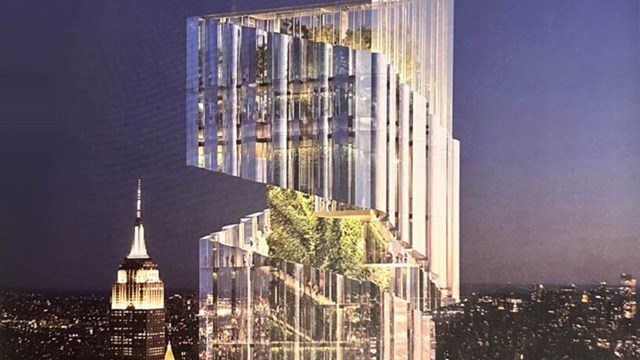New York City began as a city of immigrants and has maintained a long and laudable history of welcoming foreign travelers and residents. In recent years, residential real estate sales have glowed even brighter for buyers from overseas. Some see it as fulfilling their dream to take a bite of the Big Apple; others buy here to add to their property portfolio; while still others purchase apartments for their (lucky) college-age children. Whatever the buying motive may be, the trend has turned Manhattan into a recession-proof real estate island.
Very Big Money
According to the National Association of Realtors, from March 2010 to March 2011, sales from buyers overseas amounted to a total of about $82 billion, up from $66 billion, meaning about 8 percent of all U.S. home-buying transactions. However, in New York, though the origins of buyers have changed through the years, the piece of the pie has remained at about 15 to 20 percent.
For example, during the 1980s, most foreign buyers of New York City residential real estate were from Japan. Then in the 1990s, the Middle East and Russia brought the money, and Israel lifted its ban on citizens of that country buying property overseas, creating a surge of Israeli buyers at the end of the 20th century. In the mid 2000s, a boom in the Irish economy sent buyers from Dublin to New York City and, most recently, a flurry of European buyers made the most of the strong Euro.
Foreign buyers today hail from pretty much every country you can think of, but Irish and Middle Eastern buyers are still making a big dent, with Asian and Latin American purchasers gaining quick ground. Plus, with the city’s record-setting $88 million purchase of a Central Park West penthouse by a Russian fertilizer magnate for his college-aged daughter, it’s clear that the former Soviet Union is still very much interested in the Big Apple.
Serving the Demand
According to Wei Min Tan, founder of Castle Avenue Group within Manhattan-based Rutenberg Realty, upwards of 50 percent of his clients are foreign. “About four years ago, a lot of foreign buyers were European,” he says. “But that’s tapered off a bit because of the European debt crisis.” Tan now sees an uptick in interest from both China and Brazil, while Gea Elika, owner of Elika Associates in Manhattan says he feels it’s somewhat of a “moving target” and has noticed increased activity from Australia, Greece and Spain. One of Elika’s recent clients from Australia bought a multimillion-dollar unit in a classic West Village building sight unseen.
“The good thing about foreign buyers is that they come in cycles,” says Tristan Harper, senior vice president at Prudential Douglas Elliman. “When things are good in Europe, we have European buyers; when things are good in Asia, we have Asian buyers; when things are good in Latin America, we have Latin American buyers.” Despite the downturn in the overall housing market, New York has remained steady. “We have foreigners continuing to invest in our market,” Harper says.
The business has as much to do with global economic conditions as it does with America’s own situation. “I have friends in Australian property and around the world,” says Elika. “Everyone’s catching up, and we’re busy.”
“In the emerging markets, one of the first things people want to do when they get rich is visit New York,” says Tan. He notes that for many years, the real estate holdings to have were in London, but that attention and prestige began to shift toward New York about 35 years ago.
Why New York City?
Kathy Braddock, a co-founder of Rutenberg, attributes the interest in foreigners’ Manhattan homebuying to two major things: diversification of assets, and real estate as a trophy purchase. “If you are a moneyed person in the world today and you don’t own something in Manhattan, it's like not owning a Rolex or Cartier,” Braddock says. “It goes with the protocol…There’s a cachet about owning something in New York. It’s very important.” Considering that Wall Street has taken some tumbles, many investors see New York City real estate as a more stable investment than stocks.
“Overall mistrust of Wall Street, the fact that real estate has outperformed Wall Street in many cases, plus the fact that whether it's rented out or sold, it’s still tangible —property is a more solid, safer investment,” says Carol E. Levy, a Manhattan-based realtor and apartment staging professional. Levy also has clients who want their children to be educated in America. “They want to have a place here, and they won’t use it full time, but if their children end up staying here after college, they have it,” she says.
“It’s everyone’s dream to come here and study,” Elika agrees. “So the families who have the wealth are happy to provide.” Plus, adds Braddock, it sometimes works out better financially. “The rents in New York are so high, when you purchase something and think of it as an investment to sell when the person has left school, it makes more sense,” she says.
Despite the millions that foreign buyers lay out for homes in Manhattan, they still get more value than in places like Hong Kong or London. “Luxury condos here are about $1,500 per square-foot,” Tan points out. “In Hong Kong, it would be $2,000. In London, it would be $3,500. You have to compare similar kinds of cities. In the U.S., Manhattan is the most expensive, but globally it’s cheap.”
It’s also not lost on foreign buyers that the U.S. is a fairly transparent market when it comes to purchasing property. Elika recalls a Turkish client who was buying a pad for their daughter in Brooklyn and had a whole host of questions “because they’re so suspicious,” Elika says. “But everything is very transparent and documented here, whereas in places like Spain and Turkey you often don’t know what you’re getting,” he explains.
Co-ops & Other Challenges
The transparency factor makes it easier for foreign buyers but New York’s co-op-heavy market can create a sticking point. Although most foreign buyers are paying cash, which cuts out mortgage hassles, they are primarily limited to the condo market because of the rules that come with buying into a co-op. With condos making up just 15 percent of the multifamily market—which translates to only about 7,000 units—demand for those condos can be high.
“Foreign buyers look and see a lot, but…ironically, they can’t own much because a lot of it is rentals and a lot are co-ops,” Braddock explains.
“When they’re looking for a particular type of unit in a particular neighborhood at a particular price point, it’s challenging to communicate to them that we don’t have that much inventory available,” Harper says.
Still, it’s not completely impossible to buy a unit in a co-op building, and some buyers prefer to do so because they can get more for their money. According to Tan, $700,000 might buy a one-bedroom condo, but possibly a two-bedroom co-op. “The cost of a condo is about 40 percent higher,” he says. Another attraction of co-ops is their often more vintage style.
But getting into a co-op means a buyer has to meet stringent criteria and jump through more administrative hoops. “We’ve found some co-ops that are investor-friendly,” Elika says, though he puts the number at a small 7 or 8 percent of the entire co-op market. “We have to do a lot of digging for those and pick up the phone a lot,” he says.
The main issue is that co-ops frown upon transient tenants—and a buyer who lives most of the time in a foreign country, or who is purchasing on behalf of a college-aged child doesn't thrill most co-op boards. “They want people who are there and contribute to the community,” Elika explains. Once a foreign-friendly co-op is found, it requires a pile of paperwork and even after that, the co-op board can still refuse the sale. “Liquidity is always the concern,” he says, “so if you’re buying all cash, that’s fantastic, but they want to see liquidity on the back-end as well.”
By contrast, Harper goes on to say that foreign buyers attempting to buy into some very high-end condo buildings may face some extra scrutiny—including an international background check—but that condo boards really can’t do much to stop a sale, short of invoking their right of first refusal and purchasing the unit themselves.
An added hurdle is the inaccurate perception that there’s a real estate fire sale going on in New York, brought on largely by what buyers across the globe are reading about: other, much more depressed markets in other parts of the country, like California or Florida. “It’s the job of a broker to educate their clients on the reality of the situation,” says Elika. “We’re selling desirable property on an island that has limited property,” and sellers are pricing more realistically too—so offers shouldn’t veer too far southward from the asking price.
As You Like It
Whatever the purchase, it’s helpful for the foreign buyer to look at the properties in person. “It’s not impossible to do this all virtually, but real estate is still a touch-and-feel market,” Braddock says. “You’re buying a home, but you’re also buying a lifestyle—and that lifestyle is the neighborhood.”
There’s no doubt that the neighborhood a foreign buyer wants to buy into also impacts their choices. “Most of them prefer newer buildings that have a lot of amenities,” says Harper. “High-rises with nice views, even if the units are smaller. They want to see the skyline of New York, or see the park. They want services and amenities that will make them feel comfortable if they’re using it as a pied-a-terre.”
Names carry some clout too, Tan says. “Trump is popular because of the TV show and because Donald Trump himself is a celebrity.” And Fifth Avenue and addresses surrounding Central Park are recognized as desirable all over the globe.
As Levy says, “Oceanfront property in New York means Central Park.” She points to other trendy neighborhoods like Tribeca, but when money is no object, it’s Upper West Side, Upper East Side or Fifth Avenue all the way.
Generally, the more they’re paying, the more they want, but one service that New Yorkers typically consider a must isn’t always on a foreign buyer’s top priority list: a 24-hour doorman. “Even the highest-end properties around the world don’t have a 24-hour doorman,” Harper explains. Elika also notes that buyers looking for location, history, novelty and prestige look at the West Village but warns that there’s not much inventory there.
No matter where it is or what it is, the Big Apple has big-time appeal for foreign buyers. A bill proposed by Senators Charles Schumer (D-NY) and Mike Lee (R-UT) could make the appeal even greater. If it passes, it would offer residence visas to foreigners who spend $500,000 or more on residential real estate. “It benefits us by attracting more buyers to buy up excess inventory, and good for foreigners because they get to stay here,” Tan says.
There are some detractors who argue that the government should focus on fixing the economy, but it’s certainly a sign that foreign investors are valued highly—New York real estate has clearly benefited from them and will likely continue to do so. “I think there’s a very strong outlook,” Braddock says. “New York is resilient, and no matter what you say, there’s a huge cachet to owning a home in New York City.”
Elika agrees. “New York is a global brand name. People see it in the movies, they get it, they know about it, and they know what they want—we just have to show them the right place on the right street.”
“You can’t compare New York to anywhere else in the world,” Levy says. “There are always wealthy people out there who will pay for the best.”
Elisa Drake is a freelance writer and a frequent contributor to The Cooperator.







Leave a Comment